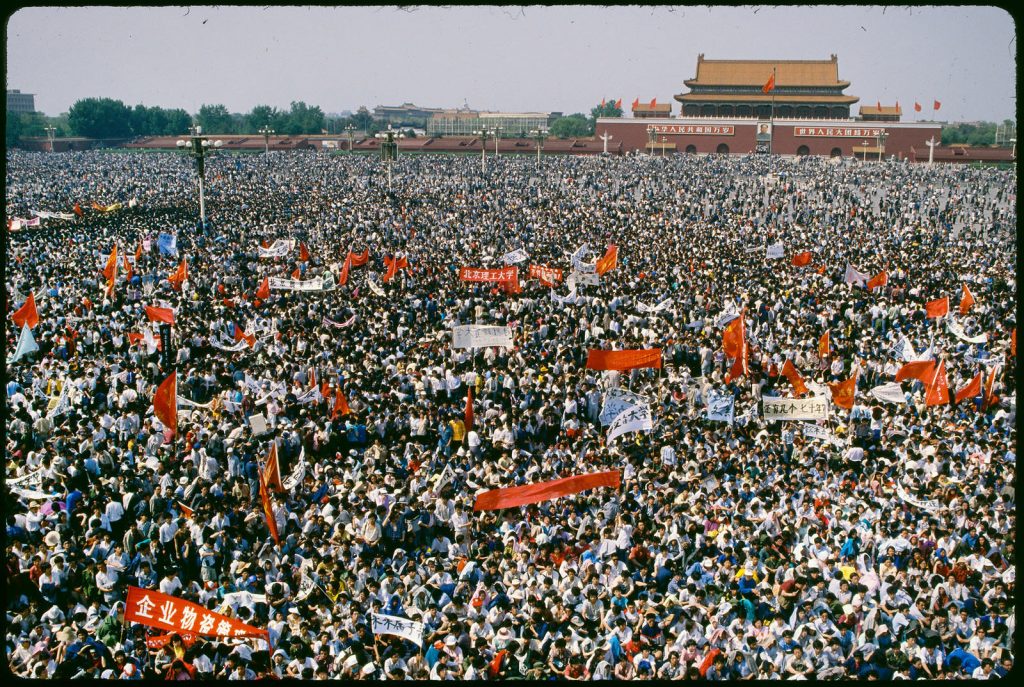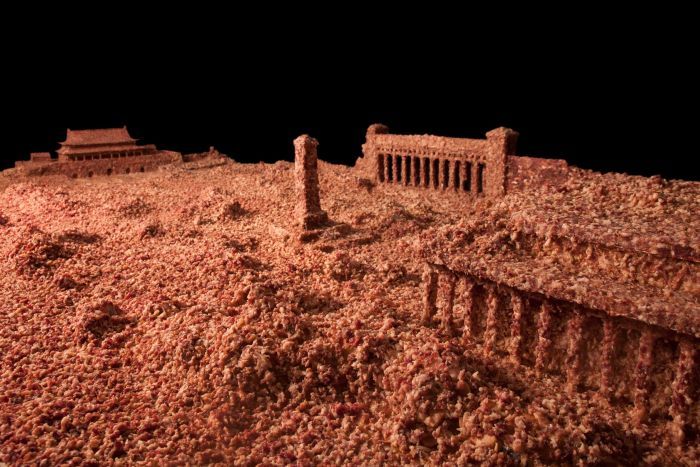 In 2005 I had the opportunity to visit Tiananmen Square. It was an eerie, haunting experience not simply because of knowing what had happened there 16 years before but because of the pressure to remain silent and forget.
In 2005 I had the opportunity to visit Tiananmen Square. It was an eerie, haunting experience not simply because of knowing what had happened there 16 years before but because of the pressure to remain silent and forget.
From the night of June 3, 1989 until early morning, Chinese soldiers carried out a clearance operation on and near Beijing’s Tiananmen Square, a crackdown on what the Chinese Government wrote off as a “counter-revolutionary riot”.
Western media reported at the time that the death toll from the resulting massacre ranged from 100 to 3,000, but according to a secret UK diplomatic cable released last year, up to 10,000 protesters may have been killed. . . .
Over 1 million people were occupying Tiananmen Square in a show of solidarity by mid-May, but on June 2, China’s rulers made the order to send tanks and armed soldiers into the heart of Beijing.
Only a year earlier we had been treated to high-tech 3-D visuals of Tiananmen Square as a proud jewel of the Chinese exhibit at Brisbane’s World Entertainment Expo.
The event “never happened” according to Chinese government and educational institutions.
Born in 1990, Ming says he never even heard about the Tiananmen Square massacre until he was at university.
He happened to overhear his roommates talking about the so-called June Fourth Incident — a topic which is completely censored by Beijing and inaccessible for ordinary Chinese people.
It is not mentioned in Chinese state media, and it is not taught in schools. It is also a taboo topic even within some Chinese families, including Ming’s.
In 2005 soldiers stood guard at key points to enforce …. I’m not sure what. Presumably the curfew: no-one was allowed there after daylight hours. Possibly against large groups or persons they deemed suspicious from approaching. It remained a vast empty space broken in one direction by Chairman Mao’s mausoleum and queues of people slowly moving past his embalmed body. I felt very conspicuous stepping far away from that shrine to the vast empty expanse of the rest of the square that particular afternoon, with only a handful of others in the area, and with my movements being watched by the many young guards.
What agonized me was the failure of my Chinese hosts to indicate the slightest awareness of why I might have been interested in exploring further there at all after I had completed the obligatory look at Mao’s embalmed corpse. There was the usual talk of old history, of Mao, of the architectural features. . . . I finally burst it out, though nervously, softly: What did they think of what happened …. I don’t think I had the chance to finish my sentence. One girl butted in with a tense, anxious tone (or was that my imagination?) to tell me that yes, some bad people had been there at one time and how soon afterwards soldiers came to her family’s house (far away from Beijing) to ask about her. I think she had been a student at that time. I was told that her parents and neighbours assured the soldiers that she was a “good girl” and was not mixed up with any of those very bad hooligans causing some very bad trouble in Beijing. The soldiers, she told me proudly, went away smiling having been assured by parents and neighbours that she was, as they said, a “good girl”.
The reaction to my question left me in no doubt that I had seriously gaffed. It was not my place to raise such a question about such a “bad thing” that happened so long ago. Was I some sort of sympathizer with “bad people” for even thinking and wanting to ask about that horrible “forgotten” time?
That was the end of my visit to the vast and — except for the guards and the people immediately surrounding Mao’s mausoleum — practically empty Tiananmen Square.

If you enjoyed this post, please consider donating to Vridar. Thanks!

Roger Waters album “Amused to Death”
Track “We Watching TV”. Starts at 42 minutes.
https://www.youtube.com/watch?v=2mTqsBOhnu4
Lyrics here:
http://lyrics.wikia.com/wiki/Roger_Waters:Watching_TV
Hey Neil:
I posted a response to someone else’s comment the other day. I talked about Nazareth being a backwater town and stuff about the “fishers of men” idea. Do you remember that one? I can’t remember what thread I posted it on?
https://vridar.org/2012/08/13/31-earl-dohertys-response-to-bart-ehrmans-case-against-mythicism-part-31-scholarly-reconstructions-of-hj/#comment-85642
Thanks so much!
Thanks for this encounter with a modern-day “Ministry of Truth” experience reminiscent of Orwell. I have an interesting back story to Tiananmen Square. I was visiting in New Zealand at the time. This was the era of the popular David Lange as prime minister and Roger Douglas as finance minister. Both came in with the Labor Party which is considered left compared to the center-right National Party. Roger Douglas was the son of a famous union leader so had good labor credentials. But in one of the oddest political turns, Douglas became converted to libertarian and neoliberal economics through I think some US economist contacts, and the Labor Party implemented sweeping privatization, selling off New Zealand government-owned and government-run entities like Air New Zealand (which had an undisputed reputation for many years for being the best airline experience in the world for travelers–this from a government-run airline) and New Zealand Steel.
This was of course controversial, but Roger Douglas had all of the neoliberal talking points, about how the private sector was so much more efficient than government, the beauty of free markets, etc and etc. So the privatization proceeded under the Labor Party. In the news was the controversial announcement that New Zealand Steel–the nation’s steel company–had been sold to a private entity, but–surprise!–the identity of the buyer was being kept secret!
Who was the secret buyer of New Zealand’s steel company? (drumroll…)
Then Tiananmen Square happened (June 1989). It was all over the news. Then the punch line: the secret buyer of New Zealand Steel, who would have become the owner of New Zealand steel, it turned out, was the Chinese Government! (That was why it was secret, because the free-marketers selling off New Zealand government assets knew that a free-market sale of part of New Zealand’s economic lifeblood to a communist state, China, who would now control that sector of New Zealand’s economy, would be a bit much, even for diehard free-market libertarians, let alone nearly everyone else in New Zealand.)
There was an uproar over the revelation of the secret buyer. Not too surprisingly Tiananmen Square made the sale untenable and the sale was canceled. As I remember the news reports at the time, the sale appeared headed to go through if Tiananmen Square had not happened when it did.
After preparing this comment I did some google searching to factcheck my memory and verified everything except for the detail of the killed sale to China, the main point. But I distinctly remembered reading about it in newspapers in New Zealand at the time. Then in an obscure source I finally found confirmation. Here it is, from the website of the “Economic and Commercial Counsellor’s Office of the Embassy of the People’s Republic of China in New Zealand,” a page titled “Chinese Companies in New Zealand” has this listing: “3. China Minmetals NZ Limited. In 1989, Minmetals first registered Minmetals NZ Ltd in New Zealand for the purpose of purchasing the New Zealand Steel Ltd. The deal was held up in the last second, but the company continued its investments in property, building supplies and International trade.”
I also feel uneasy about the Chinese Institutes that have been set up in many Australian universities so easily.